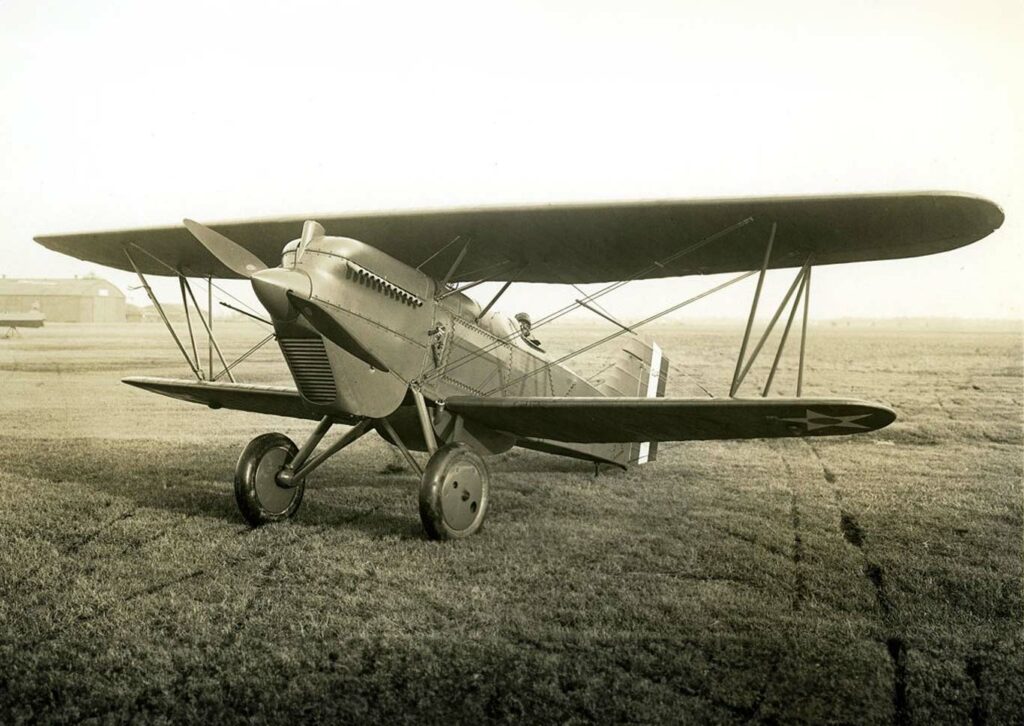The Curtiss P-1 Hawk, a 1920s American biplane fighter, known for its Curtiss D-12 engine, remarkable agility, and speed. This article provides a comprehensive overview of the Curtiss P-1 Hawk, an iconic American fighter aircraft of the interwar period. It covers the historical context of its development, its innovative design, performance capabilities, military application, and its legacy in aviation history.
The Curtiss P-1 Hawk holds a prominent place in the history of military aviation as one of the first American-built fighters to incorporate advanced design features of the early 20th century. This article explores its development, design, performance, and operational use.
History of the Development of the Curtiss P-1 Hawk:
The Curtiss P-1 Hawk was developed during a period of significant transition in military aviation. After World War I, there was a pressing need for advanced fighter aircraft that could surpass the performance of biplanes used during the war. This need was driven by advancements in aerodynamics, engine technology, and the evolving requirements of aerial combat.
The development of the P-1 Hawk was initiated by the Curtiss Aeroplane and Motor Company, a leader in American aviation. The project began in the early 1920s, with the objective of creating a superior fighter that could dominate in speed, maneuverability, and combat effectiveness. The Curtiss P-1 made its first flight in 1925, marking a significant step forward in American fighter design.
The aircraft was developed in response to the changing dynamics of military aviation and the need for more capable air forces. The United States, observing rapid advancements in European aviation technology, sought to establish its own cutting-edge military aircraft. The P-1 Hawk was a response to this strategic imperative.
Design of the Curtiss P-1 Hawk:
The Curtiss P-1 Hawk represented a leap forward in aircraft design. It was a single-seat biplane with a wingspan of 31 feet 6 inches (9.6 meters) and a length of 23 feet 1 inch (7.04 meters). The aircraft’s design incorporated a welded steel tube fuselage and wooden wings, a standard in the era’s construction.
One of the most significant features of the P-1 Hawk was its Curtiss D-12 engine, a water-cooled V-12 engine capable of producing 435 horsepower (324 kW). This engine was at the forefront of aviation technology, offering a blend of power and reliability.
The P-1 Hawk was also notable for its streamlined design, which included a more aerodynamic fuselage and a radiator for cooling the engine. These design elements contributed to its high speed and agile performance. However, the P-1 faced challenges in terms of maintenance complexity due to its advanced engine and the mixed construction methods used.
Despite these challenges, the P-1 Hawk set a new standard for American fighter aircraft, influencing subsequent designs with its emphasis on speed, power, and aerodynamic efficiency.

Performance of the Curtiss P-1 Hawk:
The performance of the Curtiss P-1 Hawk was distinguished by its powerful engine and agile maneuverability. The Curtiss D-12 engine propelled the aircraft to a top speed of 156 mph (251 km/h), a remarkable feat at the time. The aircraft had a service ceiling of around 20,500 feet (6,248 meters) and a range of approximately 300 miles (483 km).
When compared to its contemporaries, such as the British Bristol Bulldog or the French Nieuport-Delage NiD 29, the P-1 Hawk was competitive, particularly in terms of speed and engine performance. Its advanced engine set it apart from many of its rivals, although it did face competition from emerging monoplane designs.
Military Use and Combat of the Curtiss P-1 Hawk:
The Curtiss P-1 Hawk was primarily used by the United States Army Air Corps. It was armed with two .30 caliber machine guns, standard for fighters of that era. While the P-1 Hawk did not see combat in major conflicts, as it was developed during a period of relative peace, it played a significant role in the modernization of the U.S. fighter fleet.
The P-1 Hawk served as a platform for training and doctrine development in the interwar years. It was not extensively exported, with its use primarily confined to the United States. The aircraft was eventually superseded by more advanced monoplane designs, such as the Curtiss P-36 Hawk, in the late 1930s.
The Curtiss P-1 Hawk stands as a pivotal design in the evolution of military aircraft, bridging the gap between World War I-era fighters and the more advanced aircraft of the 1930s. Its development, performance, and operational history underscore the rapid advancements in aviation technology during the interwar period. The P-1 Hawk not only marked a significant achievement for Curtiss but also played a crucial role in shaping the future of fighter aircraft design.
Back to the Warbirds section.